![]()
![]()
![]()
Use LEFT and RIGHT arrow keys to navigate between flashcards;
Use UP and DOWN arrow keys to flip the card;
H to show hint;
A reads text to speech;
37 Cards in this Set
- Front
- Back
- 3rd side (hint)
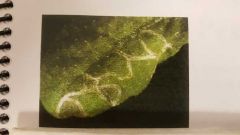
What type of insect damage is this? |
Mining of leaf caused by chewing insects |
|
|
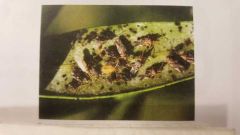
What kind of insect damage is this? |
Sucking insects feeding on tree leaf |
|
|
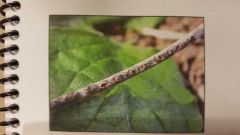
What kind of insect damage is this? |
Twig scarring caused by oviposition |
|
|
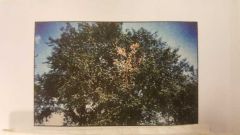
What kind of damage is this? |
Dutch elm disease |
|
|
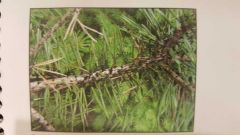
What kind of damage is this? |
Sooty mold on pine tree caused by insect excretions |
|
|
|
What are some biotic factors of "natural control?" |
Examples include insectivorous vertebrates, predaceous insects, parasitic wasps/flies, insect diseases (caused by microorganisms), density/diversity of tree stand |
Looking for 5 points |
|
|
What are some abiotic factors of "natural control?" |
Climatic factors, topographic barriers, soil conditions, disturbances such as wildfire |
Looking for 4 points |
|
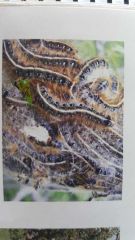
What insect is this? What type of damage does it cause? Prevention method? |
Eastern Tent Caterpillar: spring hardwood defoliating insect, mainly wild cherry, Apple, crabapple; reduce by clipping web tents, get rid of egg masses |
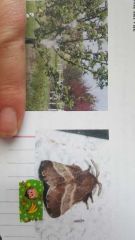
|
|
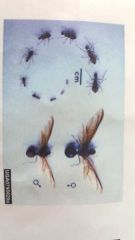
What insect is this? What damage to they cause? Prevention method? |
Texas leaf-cutting ant (town amt, fungus ant); defoliating, forage at night in summer, day in other seasons; forage on hundreds of species, all species southern yellow pine seedlings; treat many mounds 4 weeks before planting seedlings |
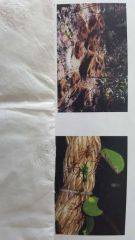
|
|
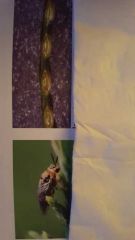
What insect is this? What damage does it cause? Prevention methods? |
Conifer sawflies (relatives of bees/wasps); use saw-like ovipositors to deposit in leaves/stems, then larvae feed on foliage, old needles; redheaded pine, blackheaded pine, loblolly pine; control measures include natural enemies, polyhedrosis viruses, climate conditions (tend to subside after 1 to 2 years) |
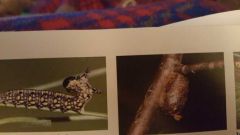
|
|
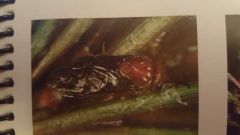
What insect is this? |
Red-headed pine sawfly |
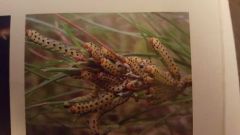
Larvae; look at head |
|

What insect is this? |
Black-headed pine sawfly |
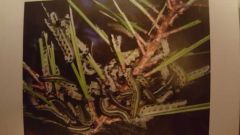
Larvae: look at head |
|
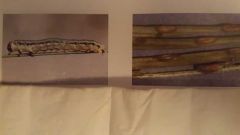
What insect is this? |
Loblolly pine sawfly |
|
|

What insect is this? What damage does it cause? Prevention method? |
Pine colapsis beetle; larvae feed on roots or grasses/vegetation and overwinter as larvae; adults emerge in summer to feed on southern pine needle edges; in forest no control needed, can use insecticide on ornamental trees |
|
|
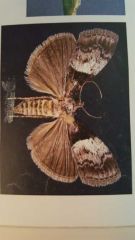
What insect is this? What damage does it cause? Prevention method? |
Pine Webworm (Adult); lay eggs on needles, caterpillars feed on needles, pupate in soil; attack seedlings, occasionally saplings/adult; hand picking effective, chemical control if necessary |
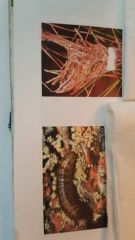
|
|
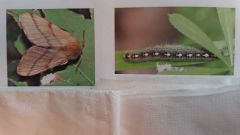
What insect is this? What damage does it cause? Prevention method? |
Forest tent caterpillar; feed on egg shells, buds, leaves and forms bulges on tree bole through oviposition, defoliation black cherry trees; damage occurs later for FTC than ETC; natural enemies such as disease usually counteract outbreaks, insecticide if necessary |

|
|

What insect is this? What damage does it cause? Prevention? |
Variable oakleaf moth; larvae defoliate leaves; control not warranted, high value trees can be protected with horticulture oils, microbial insecticides |
|
|
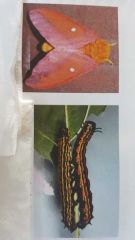
What insect is this? What damage does it cause? Prevention? |
Orange striped oakworm moth; disturbed larvae make U shape; larvae defoliate leaves; control not warranted, high value trees can be protected with horticulture oils, microbial insecticides |
|
|
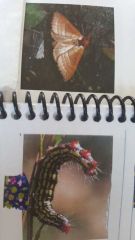
What insect is this? What damage does it cause? Prevention? |
Yellownecked (oakworm) moth; larvae defoliate leaves; control not warranted, high value trees can be protected with horticulture oils, microbial insecticides |
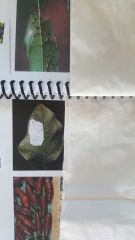
|
|
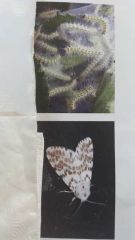
What insect is this? What damage does it cause? Prevention methods? |
Fall webworm; constructs nest over end of branches, egg masses are white/hair covered; skeletonize leaves; webs can be pruned and destroyed, infested portions can be treated with insecticide when larvae are small. |

|
|
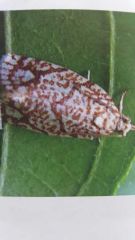
What insect is this? What damage does it cause? Prevention? |
Oak leaf roller; defoliator of native oaks, eggs on branches hatch into larvae that feed by rolling/folding into individual leaves, repeated defoliation leaves trees stressed and susceptible; control not usually viable, can use egg parasitoids |
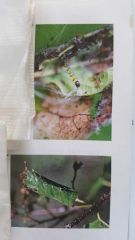
|
|
|
How many species of pine bark beetles does Texas have? What are they? |
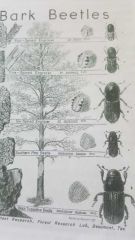
5 species: southern pine beetle, black turpentine beetle, small southern pine engraver, eastern five-spined ips, six-spined engraver |
|
|
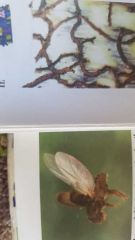
What insect is this? What damage does it cause? Prevention methods? |
Southern pine beetle; up to 7 gen. per year; attack open bole from base to crown, female creates nuptial chamber (males help construct after), signs of pitch tubes and reddish boring dust, S-shaped egg galleries; kill trees through boring and introduction of blue stain fungi in stands of reduced vigor; control through salvage and utilization or cut and leave methods, early spraying |
Most important in TX, kills thousands of trees |
|
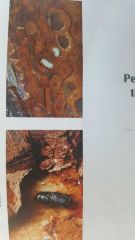
What insect is this? What damage does it cause? Prevention? |
Black turpentine beetle; largest of TX 5 with rounded posterior and 2-4 gen. per year; females bore to cambium layer, long cavelike galleries; attack basal portion, infest stumps, large (half dollar) weird shaped white reddish brown pitch tubes; natural enemies, good tree vigor, spray newly attacked trees, remove infested trees |
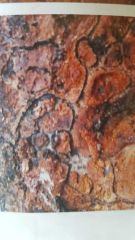
Galleries |
|

What insects are these? What damage do they cause? Prevention methods? |
Ips Engraver beetles, scooped out posteriors with 4, 5 or 6 spines; male bores to cambium layer and creates nuptial chamber, joined by females to lay eggs on both sides I/Y/H galleries; attack injured, dying, recently felled trees, dime size pitch tubes, blue stain fungus; thinning, salvage or pesticide occasionally |
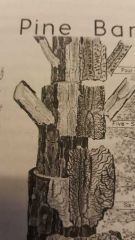
|
|
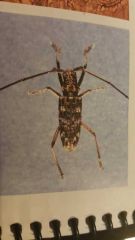
What insect is this? What damage does it cause? Prevention? |
Southern pine Sawyer beetle; chew egg niches in pitch tubes created by bark beetles and bore further into sapwood/heartwood, can result in mortality of immature bark beetles; eats xylem and structurally weakens tree; control through utilization of dying and dead trees, store logs in water |
|
|
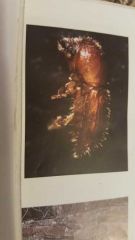
What insect is this? What damage does it cause? Prevention? |
Ambrosia beetle; chew round entrance holes into weakened/dying trees, fine white dust at base of tree; feed on fungus cultured by beetles in galleries, attracted to moisture/green trees and logs; control through removal and utilization, occasional spray |
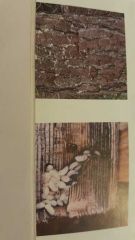
Boring dust and larvae |
|
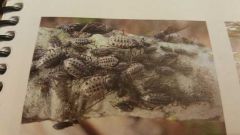
What insect is this? What damage does it cause? Prevention? |
Aphids: soft-bodied, pear-shaped insects of varying colors, dark eggs; can be found almost anywhere on hardwood/conifer tree; cause dieback, distort foliage, weaken tree, associated with honey dew/sooty mold; no chemical control recommended in forest, many natural enemies, insecticide can be used |
|
|
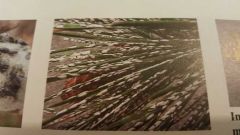
What kind of insect damage is this? Prevention? |
Scale insect damage: can vary dramatically in insect type, appearance, and look of damage; cause dieback, sooty mold, stunted growth, leaves turning yellow or red, ringlike swellings/pits in bark; control through parasites and predators, insecticides |
|
|
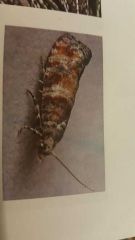
What insect is this? What damage does it cause? Prevention? |
Nantucket pine tip moth; covered in gray scales, eggs deposited at base of buds or on needles; bore into needle, stems, buds creating glassypitch blister; damage to seedlings/saplings, destroys terminal, lateral buds that distort growth; control through early insecticide (before larvae migrate from needles to bud) |

|
|
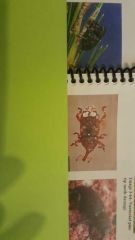
What insects are these? What damage do they cause? Prevention? |
Pine weevils (pale, pitch-eating, deodar); regeneration weevils; attracted to odors of fresh cut stumps, injured/dying pines, larvae feed on inner bark tissue of dead roots; heavy feeding girdles stem causing wilt and death, seedlings; vectors pitch canker fungus; control by delay of planting pine seedlings one season in cut areas, or insecticide in nursery, reduce tree susceptibility |
|
|
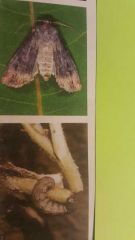
What insect is this? What damage does it cause? Prevention? |
Cutworm moth; caterpillars feed on stems and leaves of plants at night (can occasionally build in conifer pops. and kill millions of seedlings); keep seedbeds neat, use chemical control early, fumigate seedbeds |
|
|
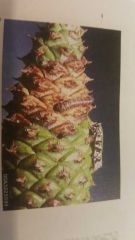
What insect is this? What damage does it cause? Prevention? |
Southern pine coneworm and moth; feed on developing buds/cones, fusiform galls, next gen. can forage previously infested cones; partial to complete seed loss in cones; use insecticide, maintain tree vigor, remove infested trees |
|
|
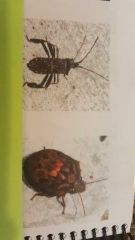
What insect is this? What damage does it cause? Prevention? |
Southern pine seed bug, southern shieldback pine seed bug; piercing-sucking mouth parts used to suck juice from conelets/seeds/developing male flowers, eggs laid in lone on pine needle;control through repeated applications of contact foliar insecticide |
|
|
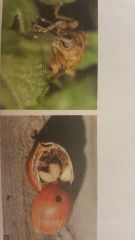
What insect is this? What damage does it cause? Prevention? |
Acorn weevil; fly to host and drill holes in acorns to lay eggs, larvae feed on acorns, pupates in ground out of fallen acorn; destroys seed production, food for wildlife; control through natural enemies, drought, insecticide if necessary |
|
|
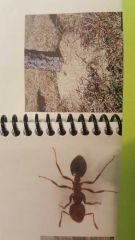
What insect is this? What damage does it cause? Prevention? |
Red imported fire ant; nests (200,000+) in open areas (Not heavily forested), rotting logs, tree trunks; can damage equipment, are large nests; control through parasitic fly intro, insecticides, baits |
|
|
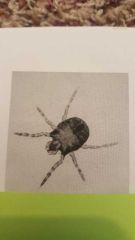
What insect is this? What damage does it cause? Prevention? |
Chiggers "redbugs"; parasitic larvae (6 legs) becomes red adult (8 legs); attaches to humans/animals in larval stage, cause itching, reddish swollen welts; use bug repellant, hot soapy bath, antiseptic solution on welts |
|

